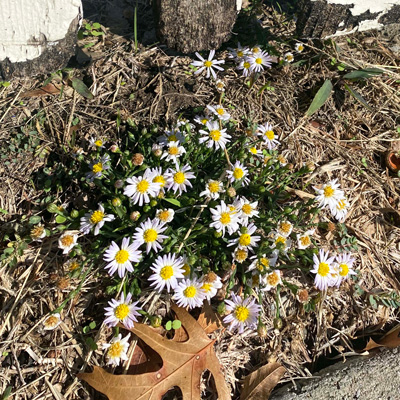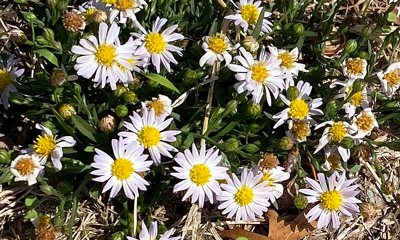Roadside Wildflower
I get it. It’s a pretty little thing while it’s blooming. For about two weeks each autumn.
Before that you hardly notice it because its tiny leaves blend right in with your lawngrass (if you have any).
After it’s through blooming, however, you’re bound to know it’s out there. Its stems are as tough as little branches – strong enough to trip you. They turn brown, almost black in the winter. And they hurt your feet when you walk on them.

This is not a weed you want to encourage. I get it that bees and butterflies love it, but there are plenty of other better plants available that we don’t need to have an invasive weed dominate our lawns and landscapes.
Roadside asters germinate in the spring. They grow all summer, and if you learn what they look like you’ll know how to identify them. That’s the time to apply a 2,4-D broadleafed weedkiller some evening to kill the existing plants before they get big and start setting buds.
By this time there is no point in trying to control them. You can’t pull them. Their tap roots are too strong. You could sever them with the corner of a well-sharpened hoe and then rake up the stubble. But it’s too late to spray them. They’ve already set seeds to ensure a good crop next year.

The real story about roadside asters…
This is a “weed of neglect.” You’ll see it in the parts of your lawn where you have the most difficult time getting water and fertilizer – out by the front curb or out back in the alley.
The first step in trying to control roadside asters is to ramp up your feeding, watering and mowing schedules to encourage your turfgrass to grow more vigorously and crowd it out. Mow at the recommended height to keep the grass low and spreading.
Give all that a try and see if it doesn’t make a decided difference for lawnkeeping season 2023.
